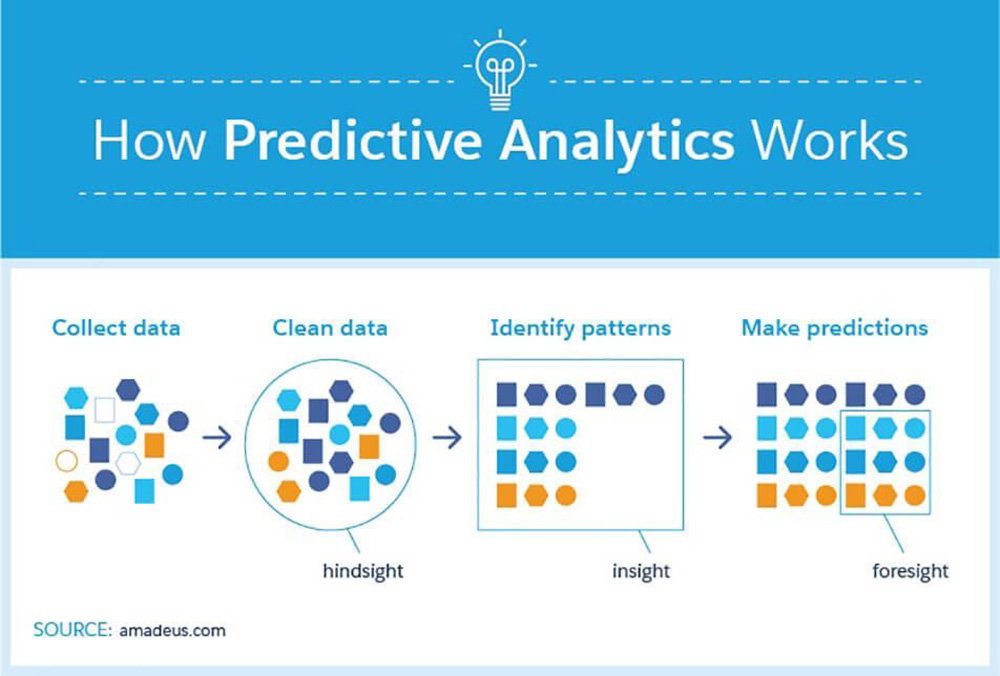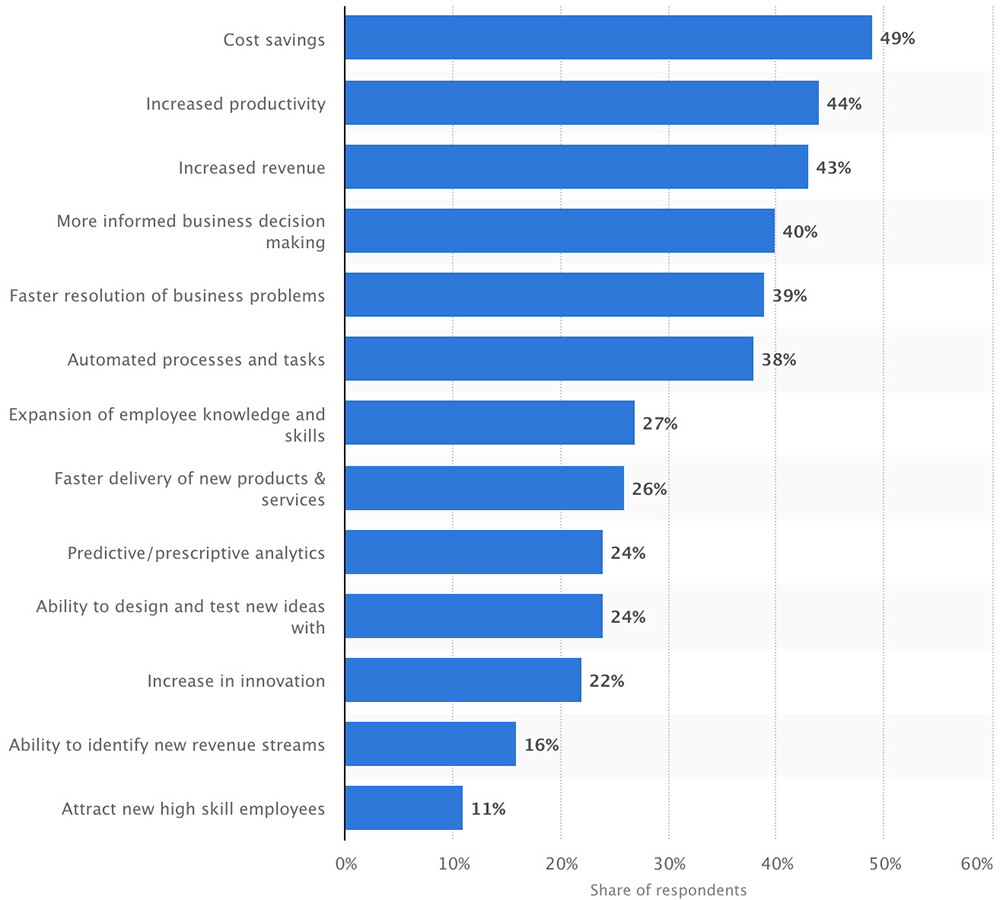Predictive Analytics in Retail – Why It Is Especially Important in 2020-21
Predictive analytics is a controversial technology when it comes to retail. On the one hand, knowing exactly what users will buy allows brands to sell more and more, reinforcing the mindless consumption trend. On the other hand, leveraging artificial intelligence and machine learning to predict retail trends can help merchants design better products, optimize supply chains, reduce emissions, and improve production safety. Let’s find out the essence of predictive analytics in retail, its hidden and obvious opportunities, main benefits to use, plus the essential reason to pay attention to this technology in 2020-2021.
Predictive Analytics in Retail
As for the definition of predictive analytics in retail, this is the set of tehcnologies that being guided by the structured data can make accurate predictions of trends, events, shopping behavior patterns, and other issues that matter for retail business. Predictive analytics is powered by machine learning and artificial intelligence, and the scope of its applications in retail is quite wide and beneficial for merchants.
How Predictive Analytics Works?
What gives me an edge is that others go to where the ball is whereas I go to where the ball is going to go. — Pele, a world soccer player.
Perhaps this statement of Pele describes the essence of predictive analytics best. Moreover, predictive tools work quite clearly even from a technical point of view. Data and data quality is the most important factor in the predictive process. Thus, the machine learning model receives a definite set of data that reflect, for example, user habits, market dynamics, price fluctuations, purchasing power, and other parameters.
Further, taking into account both historical and current data (for example, information about what has changed in the company’s sales in the last month, plus current market trends), the machine learning model makes a competent assumption about which event is most likely to occur. For example, it is possible to predict the demand for products of a certain group, taking into account trends in social networks and Google searches.
This gives merchants a competitive edge by allowing, as Pele said, to go where the ball will actually roll.

What Are Examples of Predictive Analytics?
Here is how predictive analytics in retail may work in real life.
- Customer behavior analysis. Based on the available and current data on user behavior, the predictive analytics system can predict needs, trends, the best time to remind the user, and more. The simplest example of this application of technology in retail is the recommendation engine.
- Supply and demand prediction. Also, taking into account market fluctuations, it is possible to assume the volume of supply and demand for a particular product and optimize your supply chain in accordance with this data.
- Fraud prevention. With the help of predictive analytics and user behavior analysis, it becomes possible to draw the line between potentially fraudulent and legitimate user behavior, taking into account the IP address, the history of search queries on the web, geolocation, and other more specific insights.
- Churn prediction. Also, it is possible to predict the customer’s intentions to stop using the company’s products or services and develop a personalized retention strategy.
- Price optimization. Based on the knowledge of the predicted demand, supply, and purchasing power of users, as well as prices set by competitors, you can optimize the price to perfectly match the market trends.
- Data-driven goods layouts. Offline stores also use predictive analytics to improve product layout on shelves being guided by the insights into the best-selling goods.
- Predictive maintenance. Predictive maintenance with machine learning is also one more promising application of predictive analytics in retail. Here is how it works.
What Is Meant by Predictive Maintenance?
Predictive maintenance analytics is the process of analyzing the data on the technical state of the production and/or technical equipment. The data is transferred with the help of IoT-powered sensors, then, it is analyzed and the data-driven insights are delivered right to the mobile app of the manager.
Below are the main benefits of predictive maintenance services for retail.
- Costs cut. With the help of predictive maintenance, the equipment lasts longer since all the necessary parts of production lines and transport are replaced and repaired before they are finally broken.
- Safety enhancement. The working well equipment is one more safety guarantee for the company’s employees.
- Improved productivity. Predictive maintenance with machine learning allows manufacturers to avoid costly downtimes, deadline failures, and customer service issues. These factors contribute to better overall productivity.
What Is the Difference Between Predictive and Preventive Maintenance?
| Predictive vs Preventive Maintenance | |
| Preventive maintenance is the approach according to which the necessary repairs and replacements are done according to the pre-developed schedule taking into account the specification of life service for each part. | Predictive maintenance, in turn, is a technology that allows for forecasting unexpected failures taking into account the real-time data delivered from sensors. Predictive maintenance analytics turns out to be a more efficient approach since it helps avoid troubles in advance. |
What Are the Advantages of Predictive Analytics for Retail?
Thus, it becomes possible to highlight the following advantages of predictive analytics, machine learning, and artificial intelligence for retail.

eCommerce of 2020-20201, COVID-19 and Predictive Analytics
The recent pandemic has been an unprecedented challenge for retailers, especially those with their main offline activities. Many small businesses have failed and will no longer be able to recover their operations. Those who managed to adapt quickly fled to the online space, which led to an unprecedented increase in e-commerce during the pandemic and quarantine.
So, what are we seeing now and how predictive analytics can be useful in late 2020 and early 2021?
- Significant growth in online fraud. The rise of e-commerce and the global attention riveted to the pandemic news have given fraudsters a wide field for data theft and fraudulent schemes with goods.
- Changing consumer habits. After the lesson taught by the lockdown, people became leaner and more conscious about their purchases. This means that buying trends will continue to change, which means that you better know what a certain market will have in the near future.
- There are no precise forecasts regarding the further development of the epidemiological situation. However, according to the study, machine learning and big data could help predict the next wave of the pandemic.
According to Statista, the predictive analytics services market revenue is going to reach $11 billion in revenue by 2022, so right now is the perfect time to start considering the implementation of this technology for your business.
Conclusion
Thus, predictive analytics in retails is essential in 2020 and beyond. Using this technology we will help you insure your business from unforeseen surprises in the form of a crisis, pandemic, lockdown, changing user sentiments, unexpected breakdowns of production equipment, and other troubles. What’s more, there is an opportunity to use a pre-developed solution for predictive maintenance analytics (for example, the one created by the SPD group) or hire their tech-savvy team to create a customized predictive analytics solution that will fully meet your business needs.





